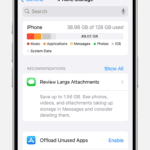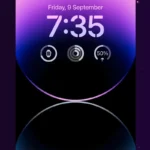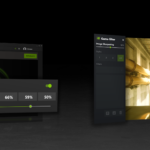Tired of your MacBook’s ringer interrupting important moments? You’re not alone. Many users find the constant notifications and sounds from their devices disruptive, especially during meetings or quiet work sessions.
To turn off the ringer on your MacBook, go to System Settings, click on Sound, and adjust the Output volume slider or check the Mute box. This simple process allows you to control when and how your device alerts you. It’s a quick fix that can significantly improve your focus and productivity.
For those who want more control, MacBooks offer additional options to customize notification sounds. You can silence specific apps or set up Do Not Disturb mode for uninterrupted work periods. These features give you the power to tailor your MacBook’s audio behavior to your needs.
Silence Your Mac in a Snap
Need to quickly silence your MacBook? Maybe you’re in a meeting, at the library, or just need some quiet time. There are a few easy ways to turn off the ringer on your Mac. Let’s take a look.
Using the Keyboard Shortcut
The fastest way to mute the sound on your MacBook is with a simple keyboard shortcut:
- Press F10 to mute or unmute the sound completely.
You can also adjust the volume using these keys:
- F11: Decrease the volume.
- F12: Increase the volume.
Using the Menu Bar
You can also control the sound from the menu bar at the top of your screen:
- Click the sound icon (it looks like a speaker).
- Adjust the volume slider to the desired level. Drag it all the way to the left to mute the sound.
From this menu, you can also choose your sound output device (like headphones or speakers) and access Sound preferences for more detailed settings.
Using Notification Center
Notification Center provides another way to adjust your Mac’s volume:
- Click the Notification Center icon in the top-right corner of the menu bar (it looks like three lines).
- Scroll up to see the volume slider.
- Drag the slider to adjust the volume or mute the sound.
Do Not Disturb Mode
If you need to silence your Mac for an extended period, consider using Do Not Disturb mode. This will prevent notifications, alerts, and calls from making any sound.
- Open Notification Center.
- Scroll up to reveal the Do Not Disturb toggle.
- Click the toggle to turn it on.
You can customize Do Not Disturb in System Preferences to allow calls from certain contacts or during specific times.
Key Takeaways
- Adjust sound settings in System Settings to quickly mute your MacBook
- Use Do Not Disturb mode for focused work sessions without interruptions
- Customize notifications for individual apps to control which alerts you receive
Setting Up Do Not Disturb Mode on MacBook
Do Not Disturb mode on MacBook helps you focus by blocking notifications. You can set it up quickly through System Preferences. This feature lets you customize when and how you want to silence alerts.
Accessing System Preferences
To set up Do Not Disturb mode open System Preferences. Click the Apple menu in the top left corner of your screen. Select “System Preferences” from the dropdown menu.
Look for the “Notifications & Focus” icon. It looks like a bell. Click on it to open the settings panel.
Do Not Disturb settings are now part of the Focus feature on newer Macs. If you don’t see “Notifications & Focus” look for “Notifications” instead.
Configuring Do Not Disturb Settings
In the Notifications & Focus panel find the Do Not Disturb section. You can turn it on manually or set a schedule.
To turn it on right away:
- Click the Control Center icon in the menu bar
- Select Focus
- Choose Do Not Disturb
For automatic scheduling:
- Go back to System Preferences
- Click “Notifications & Focus”
- Select the “Do Not Disturb” tab
- Set your preferred times
You can also choose to allow calls from certain people. This is helpful for emergencies. Pick “Allow Calls From” and select your preferred group.
Customize your settings to fit your needs. You can silence notifications when your display is sleeping or mirroring to TVs.
Alternative Methods to Manage Ringer Notifications
MacBooks offer various ways to control ringer notifications beyond the usual settings. These methods can help users manage their audio alerts more efficiently.
Using Siri for Ringer Controls
Siri can be a handy tool for managing ringer settings on your MacBook. To use Siri, simply activate it by saying “Hey Siri” or clicking the Siri icon in the menu bar.
You can ask Siri to:
- “Turn off ringer”
- “Mute notifications”
- “Set Do Not Disturb mode”
Siri will quickly adjust your settings without you needing to navigate through menus. This method is great for hands-free control when you’re busy working or in a meeting.
Remember that Siri needs to be set up on your MacBook for this to work. If you haven’t done this yet, you can enable Siri in System Preferences.
Employing Third-Party Applications
Several third-party apps can give you more control over your MacBook’s ringer and notifications. These apps often offer features not found in the default MacOS settings.
Some popular options include:
- Magnet: Helps organize windows and silence notifications
- Muzzle: Automatically mutes notifications during screen sharing
- Amphetamine: Keeps your Mac awake and can manage notifications
These apps can be found in the Mac App Store or on developer websites. They often provide more granular control over when and how your MacBook makes sounds.
Before installing any third-party app, check reviews and make sure it’s compatible with your MacOS version. Some apps may require a small fee or offer premium features for a cost.
Frequently Asked Questions
MacBook users often have questions about managing sound notifications and ringers. Here are some common queries and their solutions.
How do I mute the sound notifications for messages on a MacBook Air?
To mute message sounds on a MacBook Air:
- Click the Apple menu
- Select System Settings
- Choose Notifications
- Find Messages in the app list
- Turn off Play sound for notifications
This will stop all sound alerts for new messages.
What steps are involved in turning off the FaceTime ringer on a Mac computer?
Turning off the FaceTime ringer on a Mac is simple:
- Open FaceTime
- Click FaceTime in the menu bar
- Select Preferences
- Uncheck the “Play sound effects” box
Your Mac will no longer ring for FaceTime calls.
How can I silence incoming calls on my MacBook Air to prevent interruptions?
To silence incoming calls:
- Open System Settings
- Click Notifications
- Select FaceTime
- Turn off “Play sound for notifications”
This stops your MacBook Air from ringing for calls.
Is there a way to stop my MacBook from playing the ringtone for incoming calls and texts?
Yes, you can stop ringtones for calls and texts:
- Go to System Settings
- Click Notifications
- Select FaceTime and Messages
- Turn off sound notifications for both
Your MacBook will now be silent for calls and texts.
Can I put my MacBook on silent mode, and if so, how?
Yes, you can put your MacBook on silent mode:
- Click the Control Center icon in the menu bar
- Select Sound
- Drag the volume slider all the way down
This mutes all system sounds on your MacBook.
What’s the process to disable the message sent sound on a MacBook?
To turn off the message sent sound:
- Open the Messages app
- Click Messages in the menu bar
- Select Preferences
- Go to the General tab
- Uncheck “Play sound effects”
Now your MacBook won’t make a sound when you send messages.







